I have recently been studying "Linear Integrated Circuits" and I am currently studying about opamp circuits. The books I am referring are Microelectronic Circuits (Seventh Edition) by Sedra Smith, and Op-Amps and Linear Integrated Circuits (Fourth Edition) by Ramakant A. Gayakwad.
In the second chapter of Sedra Smith which is about Opamp, I came across a topic called common mode rejection. Now I have studied that opamp can be used as a differential amplifier both in open and closed loop configuration. Practically closed loop configurations are preferred.
The equation of opamp to obtain output voltage including the effect of common mode gain, in open loop configuration, is:
$$v_{O}=A_{d} v_{I d}+A_{c m} v_{I c m}$$ $$where, A_{d}$$ is differential gain which has got to be equal to open loop gain of opamp. However, when deriving the equation for closed loop configuration, with the output voltage formula remaining the same, as shown in the second circuit, $$A_{d}$$ does not seem to refer to the open loop gain of opamp but instead refers to the closed loop gain of opamp and comes out to be: $$ A_{d}=\frac{R_{2}}{R_{1}} $$
I think the differential gain in the output voltage formula of opamp should be consistent in meaning whether the opamp is being used in either open loop configuration or closed loop configuration. How does this ambiguity arise?
$$ \mathrm{CMRR}=\frac{A_{d}}{A_{c m}} $$ Now Ad is the differential gain here. But in open loop config of opamp as shown in circuit 1, Ad = A (open loop gain of opamp). However in the closed loop config (negative feedback) in circuit 2, Ad = G (closed loop gain of opamp). Isn't it an ambiguity ?(As Ad should have a consistent definition whether open loop or closed loop config of opamp)
Some more clarification about my question:
We can see that this circuit is the open loop circuit and common mode signal can occur in it also. For open loop config circuit : $$ \mathbf{V}_{\mathbf{o}}=\mathbf{A}_{\mathbf{d}} \mathbf{V}_{\mathbf{d}}+\mathbf{A}_{\mathbf{c}} \mathbf{V}_{\mathbf{c}} $$ Ad= A (open loop gain of opamp) $$ \mathrm{V}_{\mathrm{d}}=\left(\mathrm{V}_{\mathrm{+}}-\mathrm{V}_{\mathrm{-}}\right) $$ $$ \Rightarrow\mathrm{V}_{\mathrm{d}}=\left(\mathrm{V}_{\mathrm{2}}-\mathrm{V}_{\mathrm{1}}\right) $$ V2 is voltage source at non inverting terminal of opamp and and V1 is voltage source inverting terminal.(voltage source V2=V+ and voltage source V1=V-)
Closed loop config circuit: $$ \mathbf{V}_{\mathbf{o}}=\mathbf{A}_{\mathbf{d}} \mathbf{V}_{\mathbf{d}}+\mathbf{A}_{\mathbf{c}} \mathbf{V}_{\mathbf{c}} $$ Ad= G (closed loop gain of opamp) $$ \mathbf{V}_{\text {o }}=\mathbf{A}\left(\mathbf{V}_{+}-\mathbf{V}_{-}\right) $$ (in terms of open loop gain) $$ \mathrm{V}_{\mathrm{d}}=\left(\mathrm{V}_{\mathrm{i2}}-\mathrm{V}_{\mathrm{i1}}\right) $$ Vi2 is voltage source at non inverting terminal of opamp and and Vi1 is voltage source inverting terminal. (voltage source Vi2 is not equal to V+ and voltage source Vi1 is not equal to V-)
So this gives two definitions of CMRR, one with one loop gain and the other with closed loop gain.
References
Open Loop Config Opamp with Common Mode Gain
Some specific pages of Sedra Smith
Some specific pages of Gayakwad
Differential Amplifier Wikipedia


